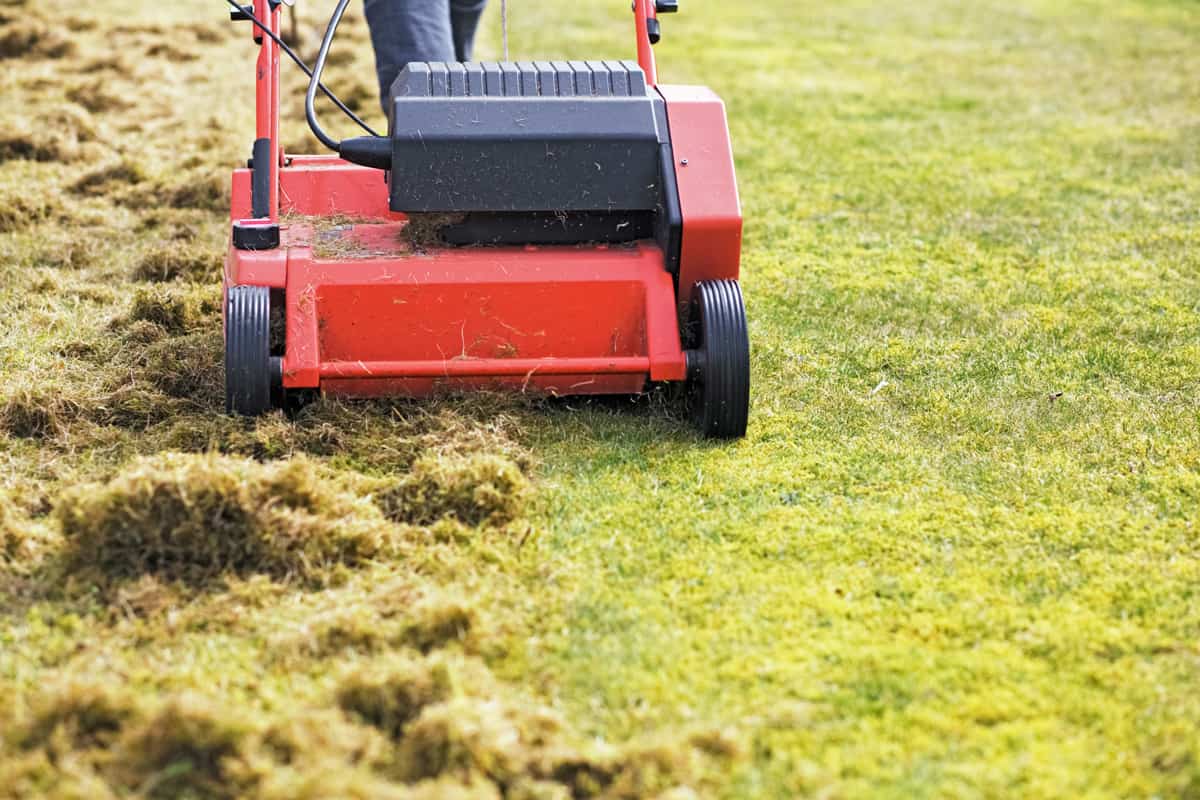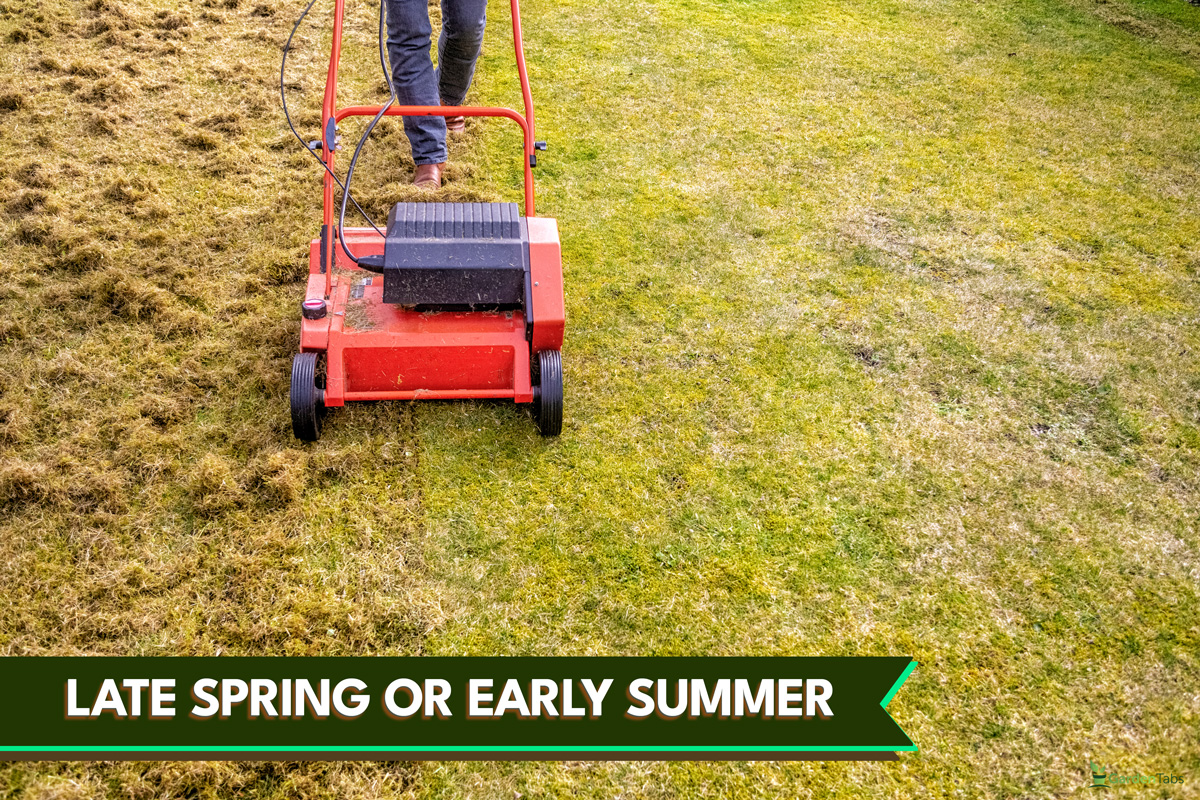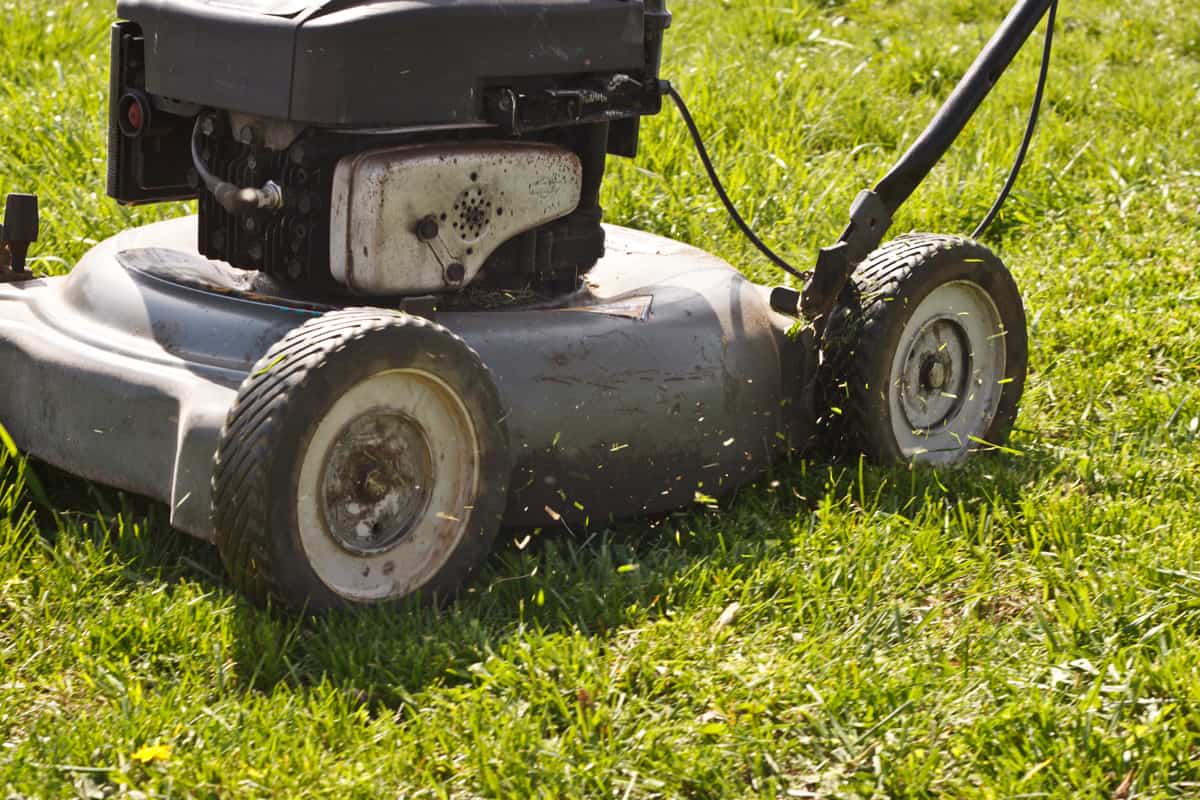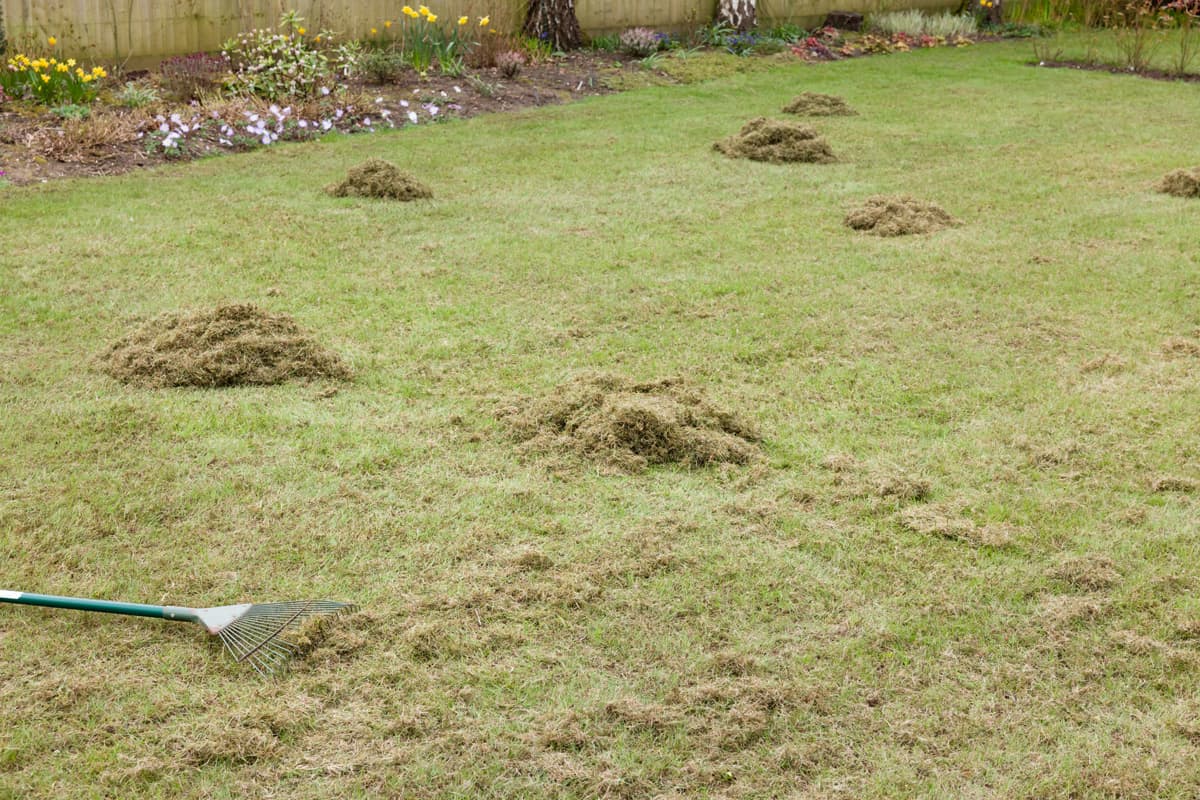If you're torn about which to choose between an electric and pull-behind dethatcher, we got you covered! We researched their features to know which one you should choose, and here's what we found.
If you want to dethatch and mow your lawn simultaneously, you should go for a pull-behind dethatcher. Additionally, this is easy to use and is typically hitched to a tractor or a riding mower.
On the other hand, electric dethatchers are perfect to use in small yards. Also, you only need to walk back and forth to use this equipment. However, you need an outdoor power source to use this equipment.
Keep reading as we discuss the differences between the two devices. We'll also talk about the pros and cons of each piece of equipment and factors you need to watch out for in choosing which type of dethatcher to use. With that said, let's dive right in!
Electric Vs. Pull-Behind Dethatcher: What's The Difference?

Electric dethatchers rotate a cylinder with solid blades or thin tines to eliminate residues and excess thatch. This garden tool turns over matted thatch and hauls it to the surface of the lawn by digging beneath it.
View this electric dethatcher on Amazon.
On the other hand, pull-behind dethatchers are easy to operate once you securely hitch them to a tractor or a riding mower.
Set the desired cutting depth, then turn the engine on. Make sure that you overlap each pass to ensure that all thatch will be removed.
Pull-behind dethatchers typically take the shape of a flat steel deck between 17 and 20 inches broad with long, spring-loaded tines that aid in raking out the thatch.
Electric Vs. Pull-Behind Dethatcher: Pros And Cons
You can refer to this table below to compare the pros and cons of an electric and a pull-behind dethatcher:
|
Dethatcher Type |
Pros |
Cons |
| Electric |
|
|
| Pull-Behind |
|
|
How Do You Hitch A Pull-Behind Dethatcher To A Riding Mower?
If you want to know how to hitch a pull-behind dethatcher to your riding mower, you can follow these steps:
Step 1: Prep Your Lawn
If you have tall grasses in your lawn, cut them off to efficiently use your dethatcher. You can use a mower to trim your lawn grass to a maximum of 3" or 1/2 the height of your grass.
Step 2: Assemble And Attach The Pull-Behind Dethatcher
Connect your dethatcher to the rear of your riding mower using the correct hitch and safety chains. Ensure to familiarize the installation and operation guidelines of your dethatcher.
Remember that the entire front and back tines must be in contact with the ground.
Step 3: Start Using Your Dethatcher
Once your tool is firmly in place, turn on your riding mower. Adjust the depth of the cutting blade to its desired height. Then, slowly drag the dethatcher to start your dethatching task.
Go back and forth and make an overlap on each pass you make.
Should Lawn Size Affect Your Choice Of Dethatcher?
Lawn size is the biggest factor you need to consider when looking for a dethatcher to use.
An electric dethatcher is best for mid-sized properties, typically a couple of acres. On the other hand, pull-behind dethatchers are more practical for large properties with a few acres of land.
How Do You Improve Penetration For Pull-Behind Dethatchers?

An additional load can be applied to some pull-behind dethatchers to aid in pushing the tines further into dense thatch.
When dragging a deck across the yard, a heavy load, such as concrete blocks, can occasionally be placed on top of the deck to aid the tines' improved soil penetration.
Other Factors To Consider When Choosing A Dethatcher
The following are factors you need to consider before choosing which dethatcher:
- Tine number. The machine's breadth tells how many tines are incorporated into a dethatcher.
- Tine material. Given that thatch is frequently moist and can cause some metal to rust, the substance of the tines is essential. The best tines are made of stainless steel or spring steel since they are both robust and corrosion-resistant.
View this Tine replacement on Amazon.
- Power source. You must consider the power supply if you decide to get a dethatcher. Most modern brands use electricity, while you can purchase some kinds that require pushing the tines. To use an electric dethatcher, you'll need an outlet and an extension cord that can reach every part of your yard.
- Added feature. Some dethatcher models have a few extra functions that could make your choice simpler. It can be height adjustment or any mechanism affecting the tine's contact with the grass.
When Is The Best Time To Dethatch A Lawn, And How Often Should You Do It?

Dethatching warm-season grasses are advised in the late spring or early summer. Cool-season grass, on the other hand, is best dethatched during early spring or fall.
You should dethatch your lawn annually or whenever there is more than 1/2" of thatch in your property.
Too frequent dethatching is not necessary because some organic stuff breaks down into fertilizers that feed your lawn.
Is A Power Rake The Same As A Dethatcher?

Although these devices are used for the same task, i.e., removing thatch from your lawn, they're not the same.
Power Rakes
This gardening tool is best used to remove a thick layer of thatch spread out on top of your lawn's soil. Power raking is a more forceful method of clearing thatch and dead materials.
With power rakes, you can remove more than 1/2" of thatch, and its capacity is four times as much as a dethatcher.
The drawback of using this tool is that it will take some time for your grass to recover. And if you're a newbie in using it, you could worry that you've damaged your yard.
However, your lawn will eventually recover and be healthier than ever.
Another drawback is its high cost and impractical when you use it rarely.
Dethatchers
This device is a tiny piece of equipment that resembles push lawnmowers in appearance.
Some are available as lawnmower-attachable extensions. This typically has rotating sprint tines that lift the thatch and dead grass from your lawn.
Moreover, dethatchers help remove thin layers of organic debris that have started to decompose on top of your lawn. Unlike power rakes, this tool can only handle thatch that is 1/2" or less.
On the downside, dethatchers have much fewer tines. You must frequently maintain your equipment due to wear and potential ground entanglement.
Additionally, it is hard to use if your ground is uneven and won't do much good if your lawn is in bad shape.
What Are The Signs That You Need To Dethatch Your Lawn?

Before you start your dethatching job, always inspect the thatch layer of your lawn.
Here are some signs that your lawn needs dethatching:
Spongy Lawn
Dethatching is typically necessary for a lawn that feels springy or spongy underfoot and has a dense thatch covering.
Your lawn's texture is the first indication of whether or not it needs to be dethatched. Check the ground's firmness by walking around for a bit. The thatch has grown too thick when the ground seems almost springy or bouncy.
Use your palm to test the firmness if walking around the grass doesn't give you a decent indication. Till the thatch is felt, push the grass down.
Determine whether it seems excessively thick by using your palm, which is more sensitive to the spongy sensation than your feet.
Thatch Depth Is Too Thick
You can use your fingers to determine the thickness. Keep an eye on how high the thatch extends on your finger. Measure the depth by removing your finger and pulling it out.
When the layer is more than 1/2" deep, it's time to start dethatching.
Our Final Thoughts
You should use an electric dethatcher if you have a small lawn, an outdoor power source is accessible, and you have an extension cord that can cover your area.
Also, if your thatch build-up isn't thicker than 1/2", you should use one.
Conversely, use a pull-behind dethatcher if you have a thicker thatch layer. You can hitch it to a riding mower or tractor. It is simple to use and is efficient on uneven terrains.
Made it to the end? Check out these helpful related articles:
Lawn Sweeper Vs. Dethatcher Vs. Bagger - Which Is Right For You


